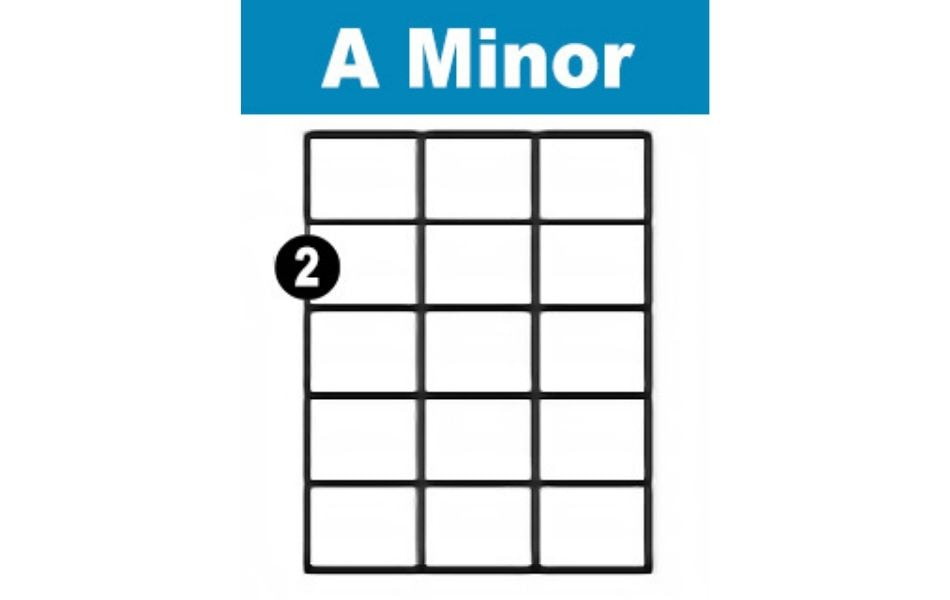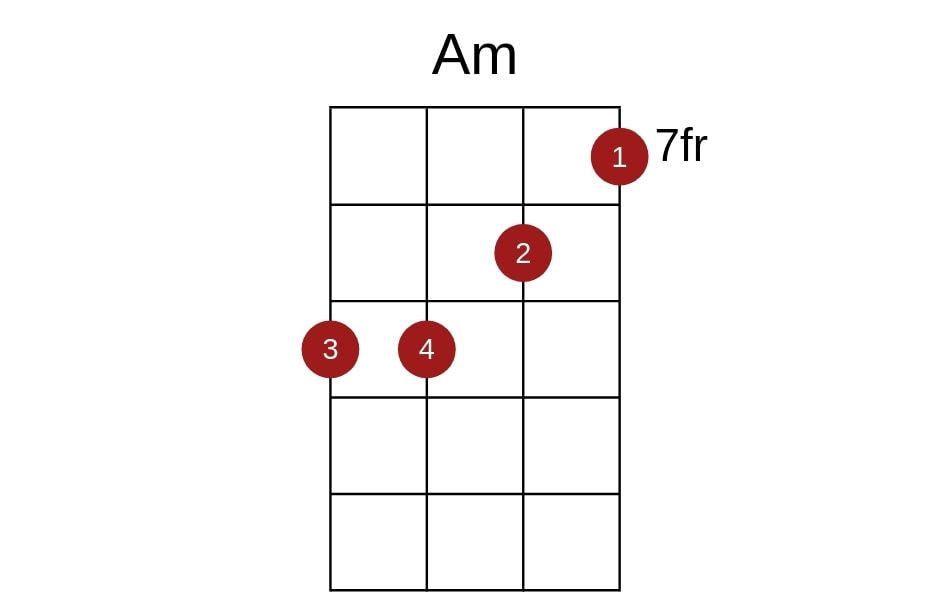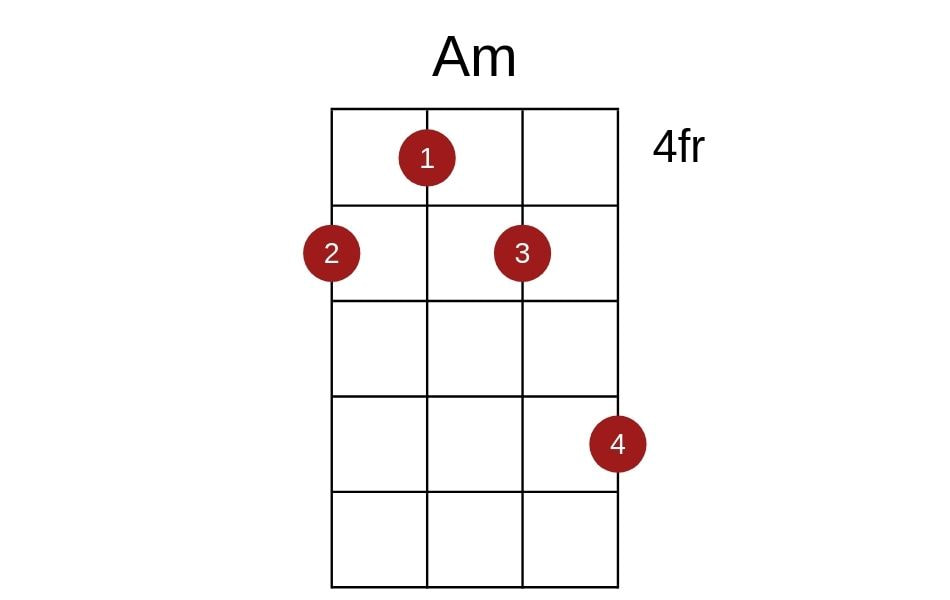The world of music is a canvas painted with chords that speak to the soul. When we conjure images of chords steeped in melancholy and depth, the A minor chord ukulele often stands at the forefront. In the symphony of musical expression, it is the answer to the brighter hues of C major, embodying the poignant essence of minor chords. Today, we embark on a journey to explore the soulful sound of the Am chord on the ukulele, unveiling its emotional depths and the stories it yearns to tell.
Contents
Overview of A minor chord ukulele
Before we dive into the techniques for playing the A minor chord on your ukulele, it’s essential to establish a foundational understanding of chords in general and the specific nature of the A minor chord. As the name implies, A minor falls within the category of minor chords. Minor chords, like A minor, are constructed around a fundamental musical concept known as the ‘minor triad.’
A triad, in music theory, is a chord built upon three keynotes. The minor triad consists of the root note, the minor third, and the perfect fifth. It’s this precise combination of notes that imparts minor chords with their distinctive melancholic and somber qualities. It creates that hauntingly beautiful sound that often tugs at the heartstrings.
In contrast, major triads are constructed from the root note, the major third, and the perfect fifth, which collectively generate a bright and cheerful tonality, delivering the warm, uplifting resonance associated with major chords
How to play Am chord uke
A minor chord ukulele standard
This is the most commonly used form of the A minor chord on the ukulele, favored for its simplicity and accessibility, especially for beginners. The beauty of this shape lies in its minimalism. It involves fretting just one string while allowing the other strings to ring open. To play it, you’ll want to use your middle finger to fret the G string (the third string), and the rest of the strings, A, C, and E, should remain open.
However, when dealing with open strings, there’s a slight nuance to be mindful of. It’s not uncommon to accidentally brush against the open strings with the fingers of your left hand while pressing down on the G string. To prevent this, ensure that the fingers of your left hand that are not actively fretting are held away from the fretboard. This small adjustment will help you produce clean and clear notes while playing the A minor chord on your ukulele.

Am ukulele barre chord
Barre chords can indeed present a challenge for novice ukulele players, but investing the time and practice to master them is unquestionably worthwhile. The beauty of barre chords lies in their remarkable versatility. With these chords, you can seamlessly shift to different positions on the fretboard by sliding your hand up or down, without altering the chord shape or finger positioning.
Take, for instance, the A minor barre chord, which you can play on the 8th fret of your ukulele. To simplify this chord, begin by barring all the strings at the 7th fret with your index finger, creating a firm and uniform press. Following this, press down on the 8th fret of the E string with your middle finger, and then the 9th frets of the C and G strings using your ring and pinky fingers.
Learning to play barre chords like this may require some patience and gradual finger strength development. These chords can indeed put a strain on your hand, fingers, and wrist joint. Nevertheless, the versatility they bring to your playing makes the effort worthwhile. Incorporating barre chords into your repertoire opens the door to a new realm of musical possibilities, granting you access to a broader spectrum of chords for your creative endeavors.

Alternative Am ukulele chord
another intriguing voicing for the A minor chord ukulele, this time perched at the fifth fret. You’ll notice that this voicing carries a somewhat darker and richer tonal quality compared to the standard A minor chord we explored previously. To bring this voicing to life, follow these steps:
- Begin by fretting the fifth fret of the G string using your middle finger.
- Press down on the fourth fret of the C string with your index finger.
- Next, fret the fifth fret of the E string with your ring finger.
- Lastly, reach for the seventh fret of the A string with your pinky finger.

While this shape may initially appear complex or challenging, you’ll likely discover that it becomes more manageable with practice, eventually ingraining itself into muscle memory. The unique character of this voicing introduces a captivating tonal variation that can add depth and emotion to your ukulele melodies
Embracing the A minor chord ukulele voicings on your ukulele is a journey well worth taking. As you explore these different variations and gain fluency in playing them, you’ll discover the door to a vast array of songs swinging open before you.
